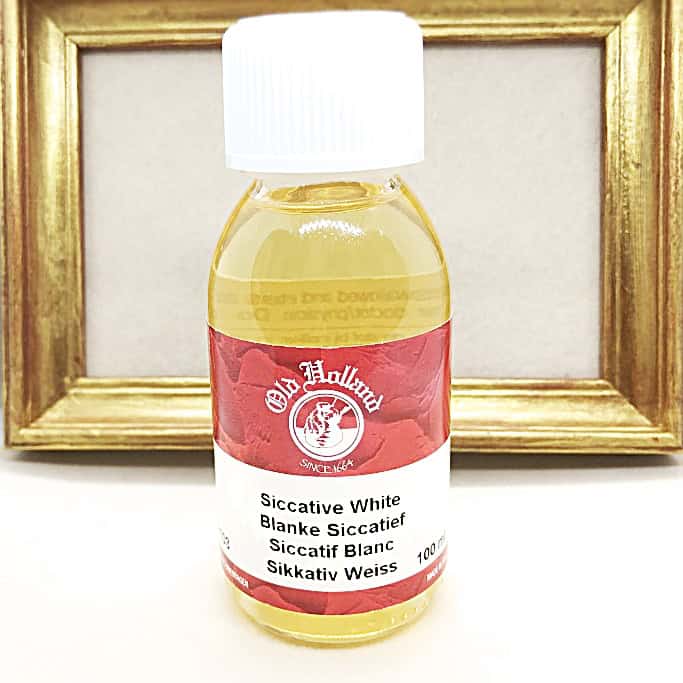
Let’s talk about siccatives
The term ‘siccatives’ is used to denote substances that accelerate the oxidative polymerization (‘drying’) of paints. They are added to paints in small amounts, because not only do they accelerate the process whereby a film is formed, but they also speed up the ‘aging process’ of the film.
Oil paints take quite a long time to dry in their normal state. Paints containing different compositions of pigments dry at different speeds. The lead whitewash and umber on linseed oil, for instance, take 1-2 days to dry, ochre takes 7-10 days, zinc white takes 10 – 12 days, and alizarin and carbon black both take 15-20 days. That is why, historically, Verdigris used to be added to black pigments when they were ground, as a siccative. An account of this can be read in a treatise by Giovanni Batisto Armenini, published in 1587. It was at around the same time that zinc siccatives first appeared. A treatise by De Mayerna (from the late XVI – early XVI century.) contains specific recommendations: “When grinding carbon black or ivory, forty parts of Verdigris should be added… Paints that do not dry, will dry.” In the fourteenth century, copper sulfate was already in use. According to chemical analysis, the use of natural siccatives based on lead or manganese – lead-tin yellow, lead white, umber, etc. – dates back to about 2000 BC.

The action that siccatives perform boils down to oxygenation of the film, which forms peroxides, and sometimes (as in the case of linseed oil) cyclic peroxides. The breaking down of the peroxides produces free radicals that contribute to the formation of the film.
Siccatives are chemical compounds that are rich in oxygen or help the oil to absorb oxygen from the air. They are oxides and oxygen-containing salts from such metals as lead (lead white, lead-tin yellow), cobalt (cobalt blue), manganese (contained in umber and manganese brown) and copper salts (in the form of Verdigrispaint, as well as copper sulfate), and they added to the oil at high temperatures.
Metallic siccatives began to be used to accelerate the drying of vegetable oils in 1840.
Organic siccatives usually take the form of metal compounds that are soluble in oil and organic solvents.
Some properties of the siccatives depend on the type of acid used. There is a wide range of siccatives, which differ in terms of composition, type, methods of application, etc.
The effect of a siccative is determined mainly by the type of metal and its concentration, which is usually 0.01-0.50% (relative to the mass of the oil) in a range of solvents and acids. It is appropriate to use the highest concentrations of metal, because it is the metal that ensures the formation of the coating (drying), while the other components in the siccative create the right conditions for the coating process to get off to a smooth start.



